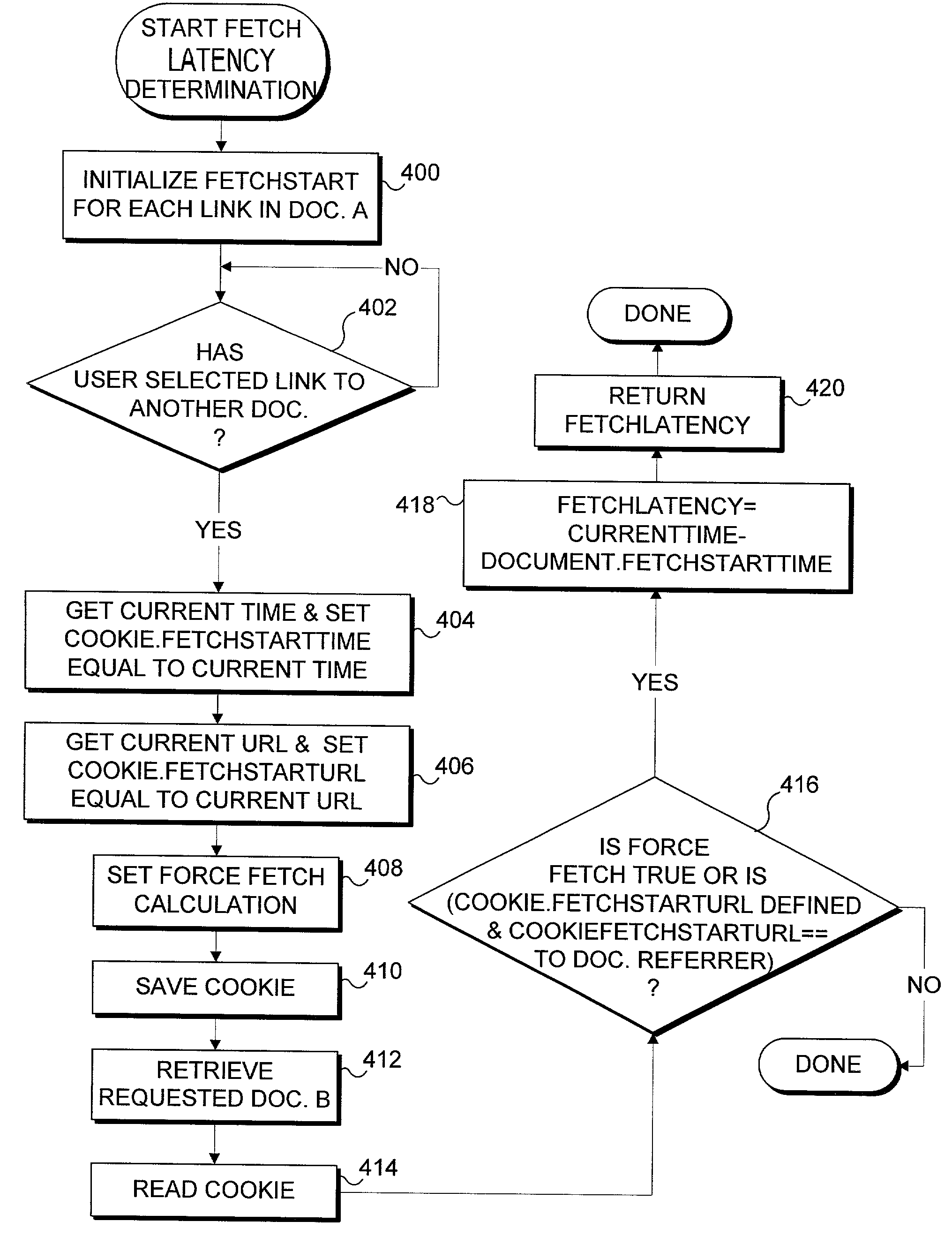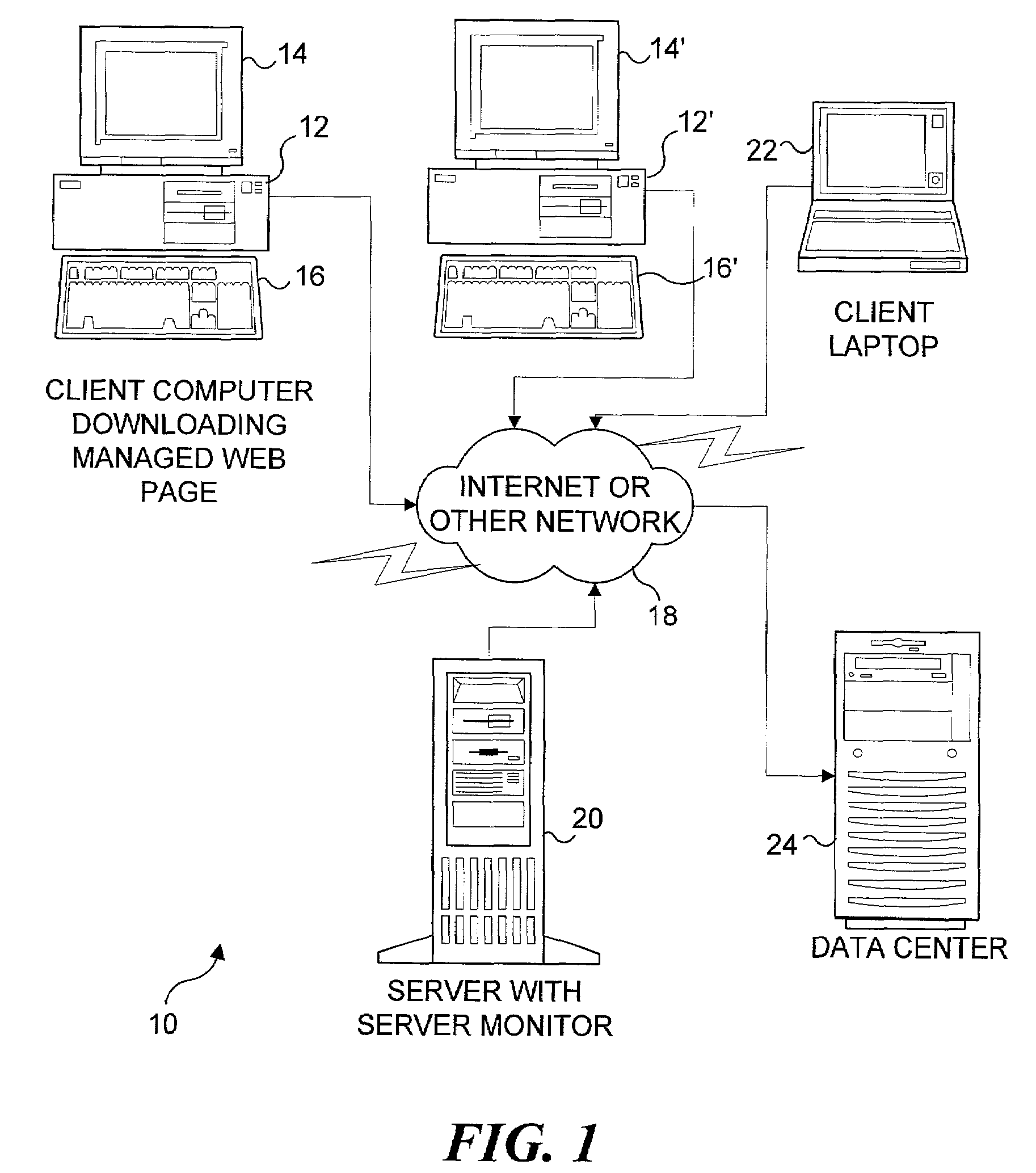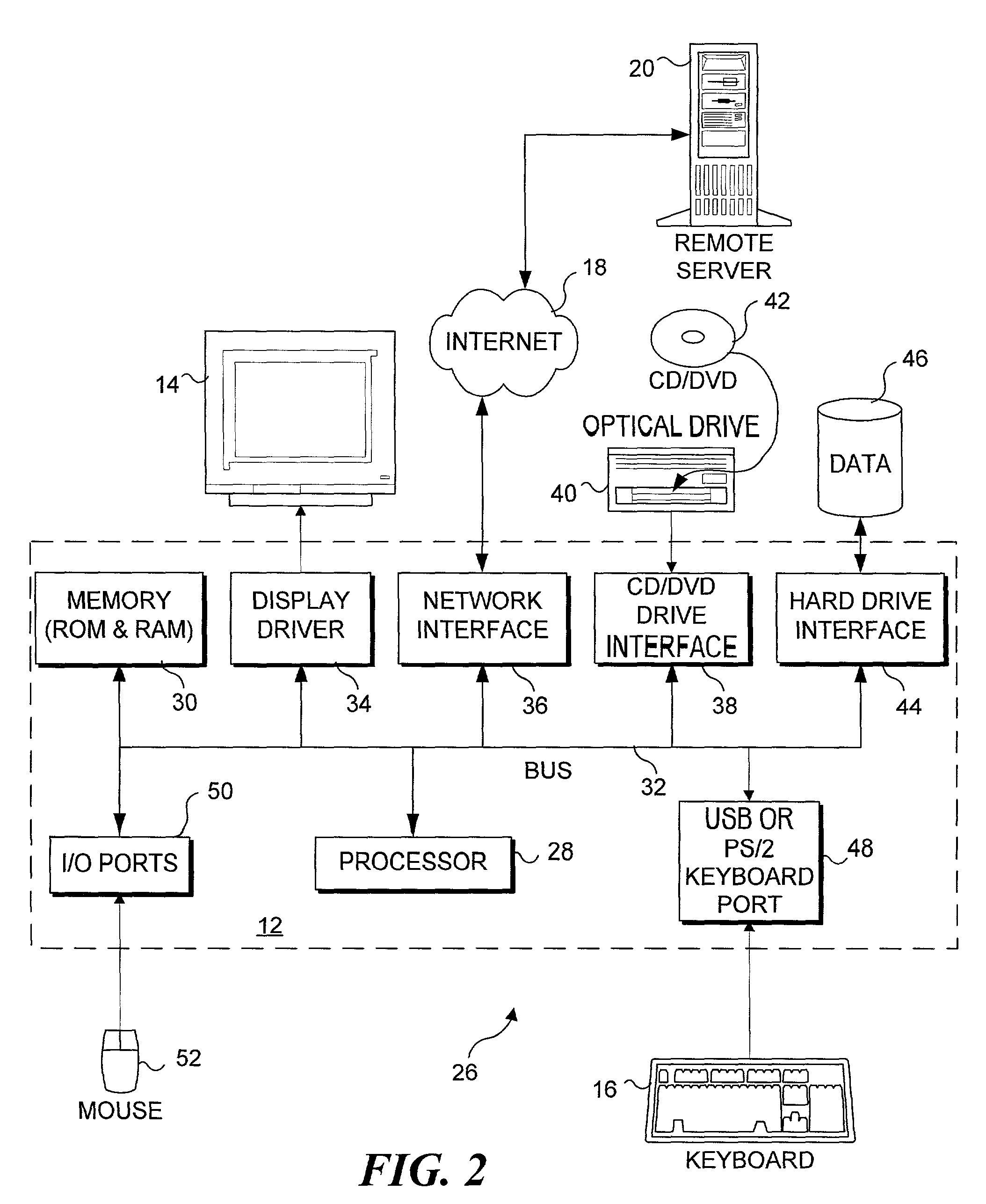Method and system for monitoring the performance of a distributed application
a distributed application and monitoring system technology, applied in the field of online monitoring of the performance of a computer system, can solve the problems of slow or poor performance of a distributed application, degradation or failure of the service of the distributed application, and the complexity of the delivery of content via htftp over the intern
- Summary
- Abstract
- Description
- Claims
- Application Information
AI Technical Summary
Benefits of technology
Problems solved by technology
Method used
Image
Examples
Embodiment Construction
Overview
[0036]The present invention is employed for monitoring performance, usage, and availability metrics for a distributed application. As a special case discussed below, the present invention supports measurement of performance metrics for distributed applications based on HTML (i.e., a Web page) delivered using HTTP as the application level transport protocol. Examples of points at which such monitoring of performance may occur include Web servers, Web browser programs, and caching proxies located on a path between the servers that supply the content and a client access device that receives the content.
[0037]The measurement system of the present invention preferably includes two types of monitoring elements. The first type is a server monitor that resides on a server responsible for the creation of content. Alternatively, the server monitor function occurs in a Web caching proxy. In another alternative, both a server monitor and a Web caching proxy monitor may be used. In gener...
PUM
 Login to View More
Login to View More Abstract
Description
Claims
Application Information
 Login to View More
Login to View More - R&D
- Intellectual Property
- Life Sciences
- Materials
- Tech Scout
- Unparalleled Data Quality
- Higher Quality Content
- 60% Fewer Hallucinations
Browse by: Latest US Patents, China's latest patents, Technical Efficacy Thesaurus, Application Domain, Technology Topic, Popular Technical Reports.
© 2025 PatSnap. All rights reserved.Legal|Privacy policy|Modern Slavery Act Transparency Statement|Sitemap|About US| Contact US: help@patsnap.com



